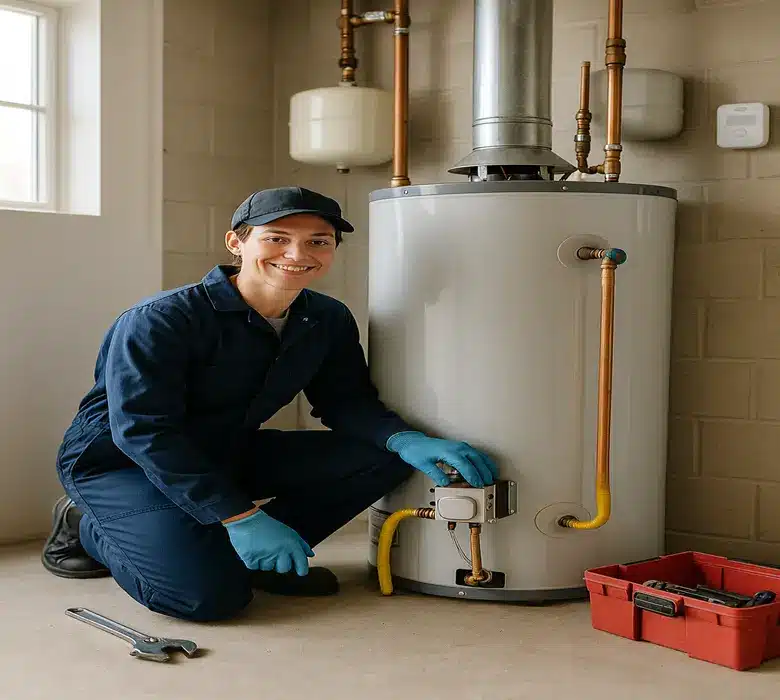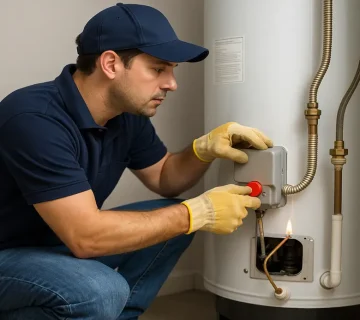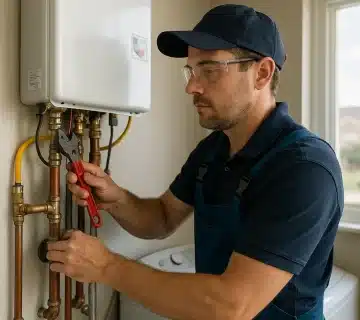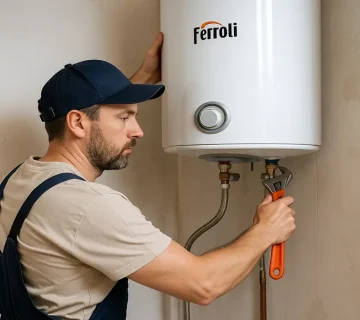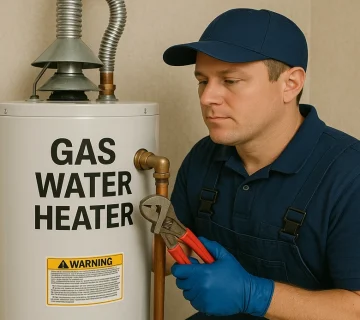gas water heater performance and efficiency don’t require a remodel—just a few smart tweaks. Use these practical, high-impact ideas to cut fuel costs, boost comfort, and extend equipment life while keeping safety first.
Gas water heater sizing: pick the right capacity (and GPM)
Right-sizing prevents cold-shower surprises and wasted energy.
- Tank models:
- 1–2 people → 30–40 gal
- 3–4 people → 40–50 gal
- 5+ people → 50–75+ gal
Prioritize the First Hour Rating (FHR)—the hot water a unit can deliver during your busiest hour. Match or slightly exceed your peak (e.g., two showers + dishwasher).
- Tankless models:
- Size by flow rate (GPM) at your winter temperature rise (desired hot temp minus incoming water temp).
- Typical fixture flows: shower ~2.0–2.5 GPM, bathroom sink ~1.0–1.5 GPM, washer ~2.0 GPM. Add simultaneous uses to pick a unit.
A correctly sized gas water heater means faster recovery, steadier temperature, and lower monthly bills.
Gas water heater temperature: set it smart (≈120°F)
Most homes save money and stay safe at 120°F (49°C). That setting reduces scald risk and mineral scaling. If you need 140°F for sanitation or a recirculation loop, add a thermostatic mixing valve at the outlet so taps still deliver safe water. As a rule of thumb, every 10°F reduction can meaningfully reduce fuel use.
Gas water heater maintenance: flush, protect, and descale
Sediment is a thief of efficiency.
- Annual tank flush: Drain until clear to restore heat transfer and reduce popping noises.
- Anode rod check (tanks): Inspect every 2–3 years; replace when depleted to prevent corrosion.
- Tankless descaling: Flush the heat exchanger yearly with a manufacturer-approved solution; increase frequency in hard-water regions.
- Combustion air and burner care: Keep the area around your gas water heater clean; vacuum dust from intake screens as directed.
For step-by-step guidance, see the U.S. Department of Energy — Water Heating.
Gas water heater insulation: quick upgrades that pay back
Heat loss costs money even when no one’s showering.
- Pipe insulation: Wrap the first 6–10 ft of both hot and cold lines to reduce standby losses and speed warm-up.
- Water-heater blanket (older tanks): If the jacket feels warm, additional insulation can help—follow label/clearance rules.
- Recirculation done right: Use a timer, smart control, or on-demand button to enjoy fast hot water without running the pump all day.
These low-cost steps often deliver quick savings on a gas water heater.
Gas water heater venting: prioritize safety and draft
Efficient combustion needs proper venting and air supply.
- Know your type: atmospheric, direct-vent (sealed combustion), or power-vent.
- Keep intake/exhaust clear of lint, leaves, or nests; inspect for corrosion and loose joints.
- Install and test carbon-monoxide detectors near sleeping areas.
- Warning signs: sooting, melted plastic near the draft hood, persistent odors, or nuisance pilot outages. Suspect backdrafting? Call a pro immediately.
Correct venting keeps a gas water heater safe and efficient.
Gas water heater upgrades: higher UEF & condensing pay off
When repair bills climb or the unit ages out, upgrades can lower long-term costs.
- UEF (Uniform Energy Factor): Higher is better. Compare models by UEF, not just input BTU.
- Condensing technology: Available in high-efficiency tanks and tankless; it captures extra heat from exhaust. Requires PVC venting and a condensate drain.
- Typical lifespans: Tanks 8–12 years; tankless 15–20+ with good maintenance.
If your gas water heater is nearing end-of-life, price the fuel savings and comfort benefits of a high-UEF replacement.
Gas water heater usage habits: small tweaks, real savings
Behavior can rival equipment upgrades:
- Shorter showers and low-flow fixtures trim demand without sacrificing comfort.
- Run full loads in dishwashers/washers; use eco or cold cycles where possible.
- Fix hot-side drips—constant trickles cycle the burner.
- Use vacation mode when you’ll be away more than a couple of days.
A few habit changes can trim 5–15% off gas water heater energy use.
Gas water heater installation essentials: avoid common pitfalls
Even a premium heater underperforms with poor setup.
- Gas line sizing: Undersized lines starve burners; verify BTU needs against pipe length/diameter and total connected load.
- Venting path: Prefer short, code-compliant runs; respect clearances from windows and eaves for sidewall vents.
- Water quality: Hard water accelerates scale. Consider a whole-home filter or softener, especially for tankless.
- Drain pan & T&P discharge: Protect floors and route relief safely.
Permits and inspections aren’t red tape—they ensure your gas water heater is safe and efficient.
Gas water heater troubleshooting: quick checks before calling
- No hot water: Confirm gas supply, pilot/ignition status, and error codes. Relight per the manual if safe.
- Not enough hot water: Check thermostat setting, sediment buildup, dip tube (tanks), or GPM overdraw (tankless).
- Strange noises: Popping/crackling = sediment; try a flush.
- Gas smell or CO symptoms: Leave immediately and call emergency services—do not troubleshoot.
Gas water heater FAQs
Is a gas water heater cheaper to run than electric?
Often yes, depending on local energy rates and model efficiency.
Can a gas water heater work in a power outage?
Atmospheric-vent tanks with standing pilots typically can; power-vent and tankless units need electricity.
When should I replace my gas water heater?
Aging past the ranges above, rising bills, frequent repairs, rust, or tank leaks are strong signals.
Gas water heater checklist (copy & save)
- Set temperature to ~120°F
- Flush tank / descale tankless annually
- Inspect anode rod (tanks) every 2–3 years
- Insulate pipes; consider a blanket (if appropriate)
- Clear/inspect vents; add CO detectors
- Compare UEF when shopping; consider condensing models
Further reading: U.S. Department of Energy — Water Heating
Call to action: Share your household size, climate (cold-water temp), and current gas water heater model. I’ll size the ideal upgrade or build a maintenance plan to lower bills immediately.

